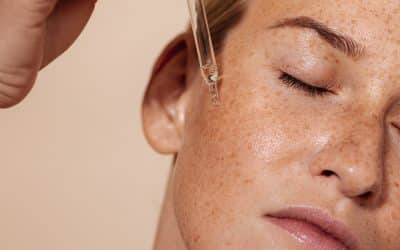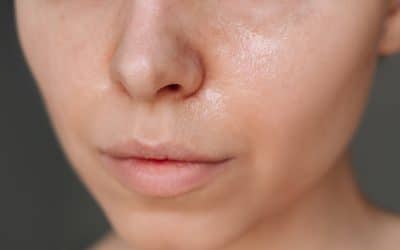

Do You Need a Chemical Peel?
You see it everywhere. Skin clinics, blogs and magazines all seem to be talking about it more than ever. Well, it’s because it’s chemical peel season. The cooler weather is the perfect time to get peels because the sun is lower in the sky, it’s not as hot or bright and we stay indoors more during these months.
Should you have a chemical peel? Let’s discuss what a chemical peel is and what it does to your skin.
A chemical peel is a chemical solution of Alpha and Beta Hydroxy Acids used to remove layers of skin thus revealing more youthful skin underneath. It can reduce or improve fine lines and wrinkles, scars, acne , skin discoloration and skin imperfections. Different chemicals determine how deep your peel is and the type of skin condition treated.
Also known as chemexfoliation or dermapeeling, chemical peels use a chemical solution to improve the appearance of your skin. The peel is applied to your skin, which causes injury or trauma to the skin’s layers, making the skin peel off revealing youthful skin. The new skin is smoother with fewer wrinkles and lines. It also has a more vibrant color and a brighter complexion. AHA’s penetrate deep into the skins top layers and stimulate the body’s natural exfoliation process, this is why we get the peeling, the layers are being pushed upward and sloughing off.
What skin conditions does it treat?
Chemical peels are used to treat certain skin conditions to improve your skin’s appearance by improving the glow and tone of your skin.
These are commonly used on the face, neck or hands. They help reduce or remove:
- Certain types of acne
- Mild scarring
- Fine lines under the eyes or around the mouth and wrinkling caused by the sun.
- Sun spots, age spots, freckles, liver spots, uneven skin color.
- Rough skin, scaly patches, dull complexion
- Dark patches or melasma due to birth control pills or pregnancy
- Actinic keratosis which are precancerous scaly spots
You should work with a professional to know the depth of your peel. Both your decisions can vary depending on your skin condition and the goals you want to achieve.
What does not respond to chemical peels are: sagging skin, deep facial lines, deep scars and severe wrinkles. Other cosmetic procedures will be better options.
Skin types and chemical peel
Is a chemical peel good for all skin types? In general, a chemical peel can be used in all skin types. But if you have darker skin tone, you have a greater chance of darkening of your skin after treatment called post-inflammatory hyperpigmentation, so it is important to check with your esthetician or skin professional if you have darker skin tone.
It should not be recommended for you if :
- You have a history of abnormal skin scarring
- Have extra coloring on your skin
- Have skin conditions or take medications that make your skin more sensitive
- Can’t stay out of the sun during the healing period.
How to do a chemical peel
Chemical peels can be done in a doctor’s office or your skin professional’s office as an outpatient procedure. Skin will be thoroughly cleansed with an agent to remove excess oil. It’s also important that when you do it, you know how to take care of your skin while on a chemical peel. And have the time to help your skin heal from it.
The chemical solutions usually used are glycolic acid, salicylic acid, lactic or carbolic acid and trichloroacetic acid. These different solutions provide different results and the type of chemical to use depends on the goal.
Light chemical peel
This provides a subtle improvement over time and done in series. The outer layer of skin is removed and this is a choice if you have fine wrinkling, uneven skin tone, sun-damaged skin to help achieve a healthy glow. Recovery time may be within hours to a few days but with little to no down time.
Medium chemical peel
It gives your skin a fresh look. The uppermost and the upper part layer of your middle skin layer is removed. This choice is best if you have uneven or moderate skin discoloration, age spots, acne scars, or fine to moderate wrinkles. Recovery time may take a week or more and require down time.
Deep chemical peel
This produces the most dramatic results, penetrating down into the lower middle layer of the skin. Recovery time is longer with a deep peel. This maybe the best choice if you have moderate wrinkles and lines , extensive sun-damaged skin, deep acne scars, precancerous growths (actinic keratosis) and blotchy skin. This requires a pre-treatment of about 8 weeks. Your skin care specialist will provide you with the specific instructions. This is a one-time treatment and have a significant down time.
So, do you think you need a chemical peel? It’s important to talk with a skincare specialist before you do a chemical peel to determine which type of chemical peel and the chemical solutions that you need for you to have optimum results and lessen the risk of other skin complications.
If you’re ready, book an appointment with me and let’s talk.




